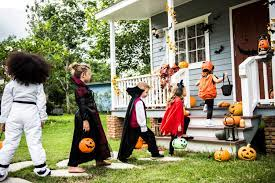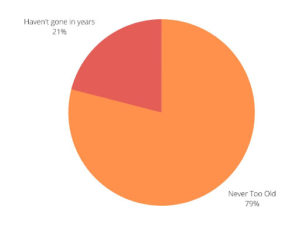Trick-Or-Treating origins remain murky, but may have started with ancient Celtic festivals, where villagers began to disguise themselves in animal-skin costumes to drive away phantom visitors.
In later centuries, people began to dress as ghosts, demons, and other creatures. Certain performances were exchanged for food and drink.
Early Christian and Medieval roots also remain an antecedent of the tradition: In 1000 A.D., poor people in Celtic lands would visit wealthier homes and receive a pastry called “soul cake”, in exchange for their prayers to the souls of the homeowners dead relatives. This behavior called “souling” was taken up by children, who would go door to door asking for food, money, and ale.
Wherever it came from, the phrase “Trick or Treat” was firmly established in American pop culture in 1951, when the tradition was first depicted in the Peanuts Comic Strip. One year later, Disney produced a cartoon named “Trick-Or-Treat”.
In present day America, Trick-Or-Treating remains an important Halloween activity whether you’re the parent handing out candy on the porch, or the child going door to door asking for the treats.
Is this a tradition teens continue to participate in, or has it been left behind in their childhood?
When Leesville students were asked if Trick Or Treating was an activity for all ages, or something that hadn’t been done in years, surprisingly, 79% of them believed you are never too old to participate.
The truth is there is no age limit to this tradition — as long as you’re in costume. If you choose to relive your childhood this year, there is no shame.

Hi! My name is Maddy and I am a staff writer for the Mycenaean. I love to travel, watch sunsets, and listen to music.


Leave a Reply